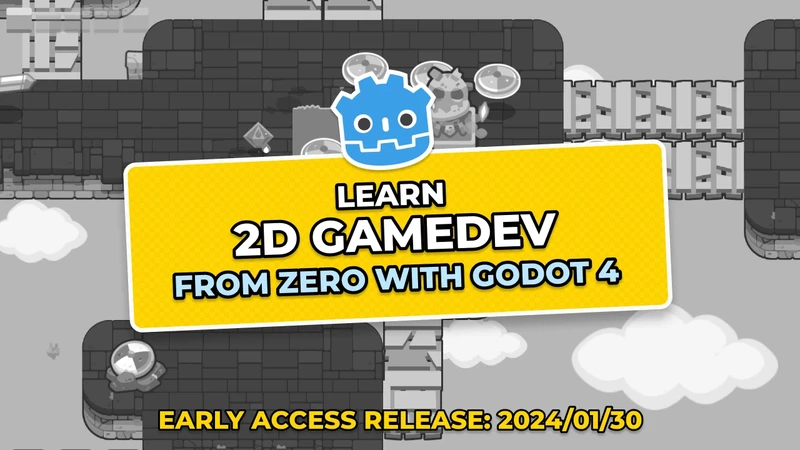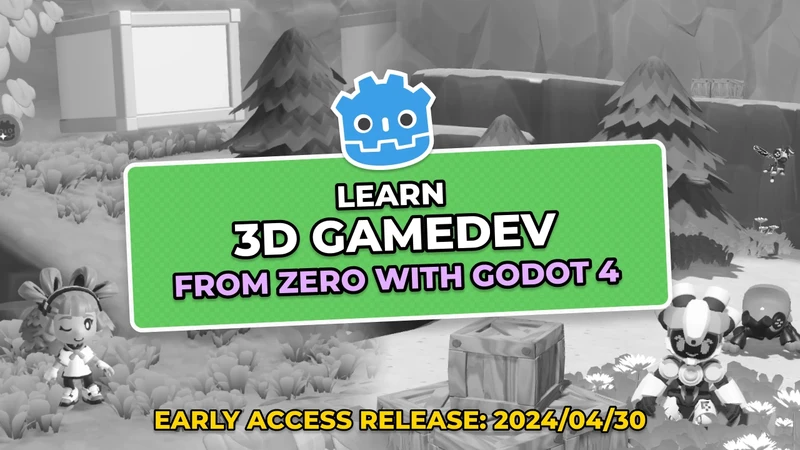In this lesson, we will create a PathFinder class that extends Godot’s built-in AStar2D, an implementation of the AStar pathfinding algorithm.
We will use it to move units to a cell picked by the player, but also to display a preview of the path the unit will walk, inspired by Fire Emblem.

Godot comes with the algorithm implemented and optimized for you. If you want to learn to implement the AStar pathfinding algorithm itself, check out the Introduction to the A* Algorithm on Red Blob Games.
While it’s often presented in games with grids, the AStar algorithm is flexible. It can find paths on any node graph. You could use it for a road or train network in an open-world game, for example.
To use an AStar2D object in Godot, you:
- Add a list of points to the object, giving each a unique index.
- Connect all the points that should form a walkable path, using the points' indices.
In the case of a grid, you should connect each cell to its unoccupied neighbors.
Once the graph is set, you call the find_path() function with the indices corresponding to two points: the start and the end. The algorithm outputs a list of coordinates through which you need to navigate to reach the end.
You can already see the catch: the AStar object works with unique IDs for each point in the graph.
This is where our grid class comes in handy with its as_index() method. With this method, we can calculate a unique index for each cell coordinates in our grid.
Here is the code for the PathFinder class. Create a new script and save it there.
# Finds the path between two points among walkable cells using the AStar pathfinding algorithm.
class_name PathFinder
extends Reference
# We will use that constant in "for" loops later. It defines the directions in which we allow a unit
# to move in the game: up, left, right, down.
const DIRECTIONS = [Vector2.LEFT, Vector2.RIGHT, Vector2.UP, Vector2.DOWN]
var _grid: Resource
# This variable holds an AStar2D instance that will do the actual pathfinding. Our script is mostly
# here to initialize that object.
var _astar := AStar2D.new()
# Initializes the Astar2D object upon creation.
func _init(grid: Grid, walkable_cells: Array) -> void:
# Because we will instantiate the `PathFinder` from our UnitPath's script, we pass it the data it
# needs to initialize itself via its constructor function, _init().
_grid = grid
# To create our AStar graph, we will need the index value corresponding to each grid cell. Here,
# we cache a mapping between cell coordinates and their unique index. Doing so here slightly
# simplifies the code and improves performance a bit.
var cell_mappings := {}
for cell in walkable_cells:
# For each cell, we define a key-value pair of cell coordinates: index.
cell_mappings[cell] = _grid.as_index(cell)
# We then add all the cells to our AStar2D instance and connect them to create our pathfinding
# graph.
_add_and_connect_points(cell_mappings)
# Returns the path found between `start` and `end` as an array of Vector2 coordinates.
func calculate_point_path(start: Vector2, end: Vector2) -> PoolVector2Array:
# With the AStar algorithm, we have to use the points' indices to get a path. This is why we
# need a reliable way to calculate an index given some input coordinates.
# Our Grid.as_index() method does just that.
var start_index: int = _grid.as_index(start)
var end_index: int = _grid.as_index(end)
# We just ensure that the AStar graph has both points defined. If not, we return an empty
# PoolVector2Array() to avoid errors.
if _astar.has_point(start_index) and _astar.has_point(end_index):
# The AStar2D object then finds the best path between the two indices.
return _astar.get_point_path(start_index, end_index)
else:
return PoolVector2Array()
# Adds and connects the walkable cells to the Astar2D object.
func _add_and_connect_points(cell_mappings: Dictionary) -> void:
# This function works with two loops. First, we register all our points in the AStar graph.
# We pass each cell's unique index and the corresponding Vector2 coordinates to the
# AStar2D.add_point() function.
for point in cell_mappings:
_astar.add_point(cell_mappings[point], point)
# Then, we loop over the points again, and we connect them with all their neighbors. We use
# another function to find the neighbors given a cell's coordinates.
for point in cell_mappings:
for neighbor_index in _find_neighbor_indices(point, cell_mappings):
# The AStar2D.connect_points() function connects two points on the graph by index, *not*
# by coordinates.
_astar.connect_points(cell_mappings[point], neighbor_index)
# Returns an array of the `cell`'s connectable neighbors.
func _find_neighbor_indices(cell: Vector2, cell_mappings: Dictionary) -> Array:
var out := []
# To find the neighbors, we try to move one cell in every possible direction and is ensure that
# this cell is walkable and not already connected.
for direction in DIRECTIONS:
var neighbor: Vector2 = cell + direction
# This line ensures that the neighboring cell is part of our walkable cells.
if not cell_mappings.has(neighbor):
continue
# Because we call the function for every cell, we will get neighbors that are already
# connected. If you don't don't check for existing connections, you'll get many errors.
if not _astar.are_points_connected(cell_mappings[cell], cell_mappings[neighbor]):
out.push_back(cell_mappings[neighbor])
return out
In the next lesson, we’ll use the PathFinder to find and draw a path between two cells.
Made by
Nathan Lovato
GDQuest founder. Courteous designer with a taste for Free Software. I promote sharing and collaboration.

